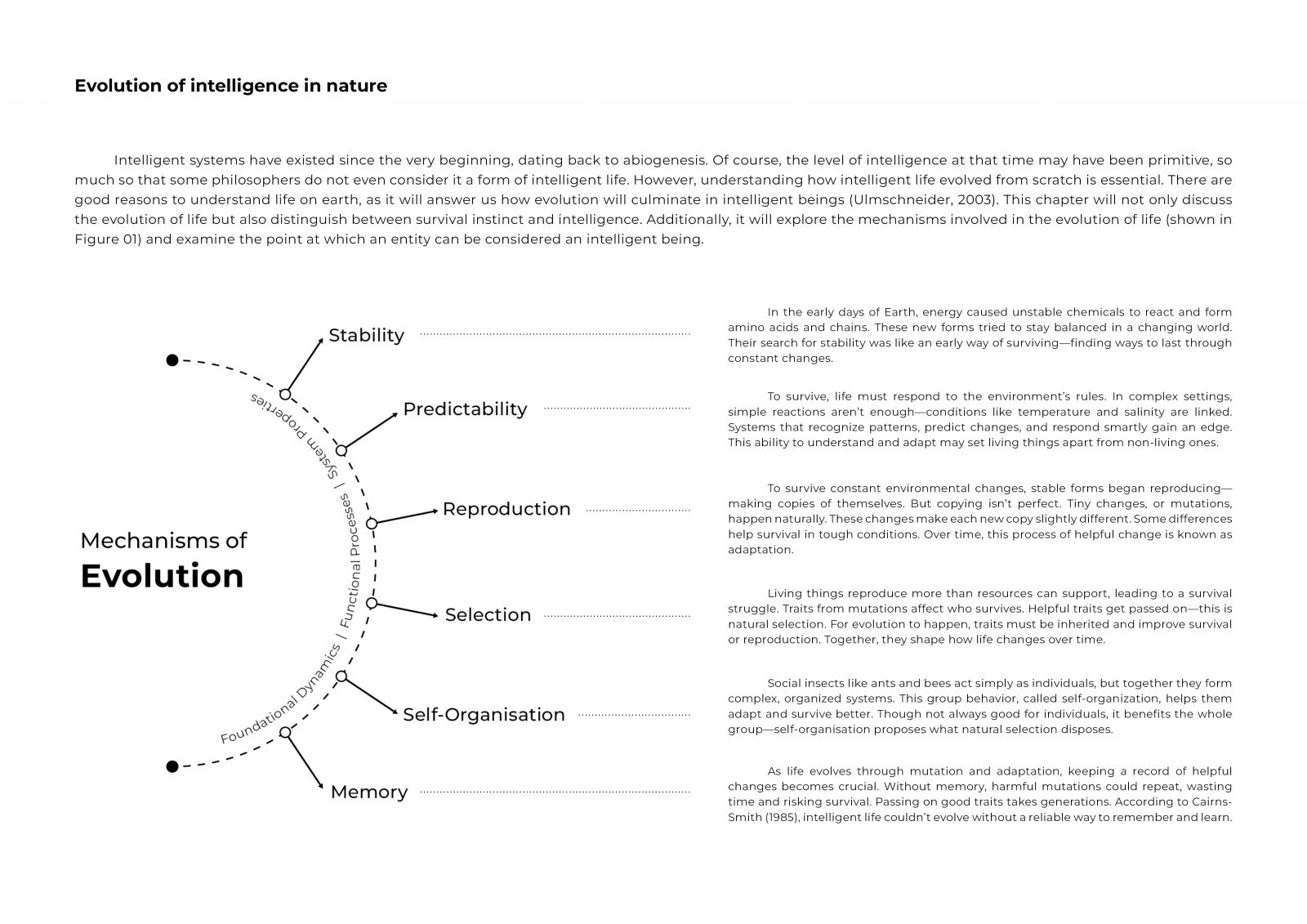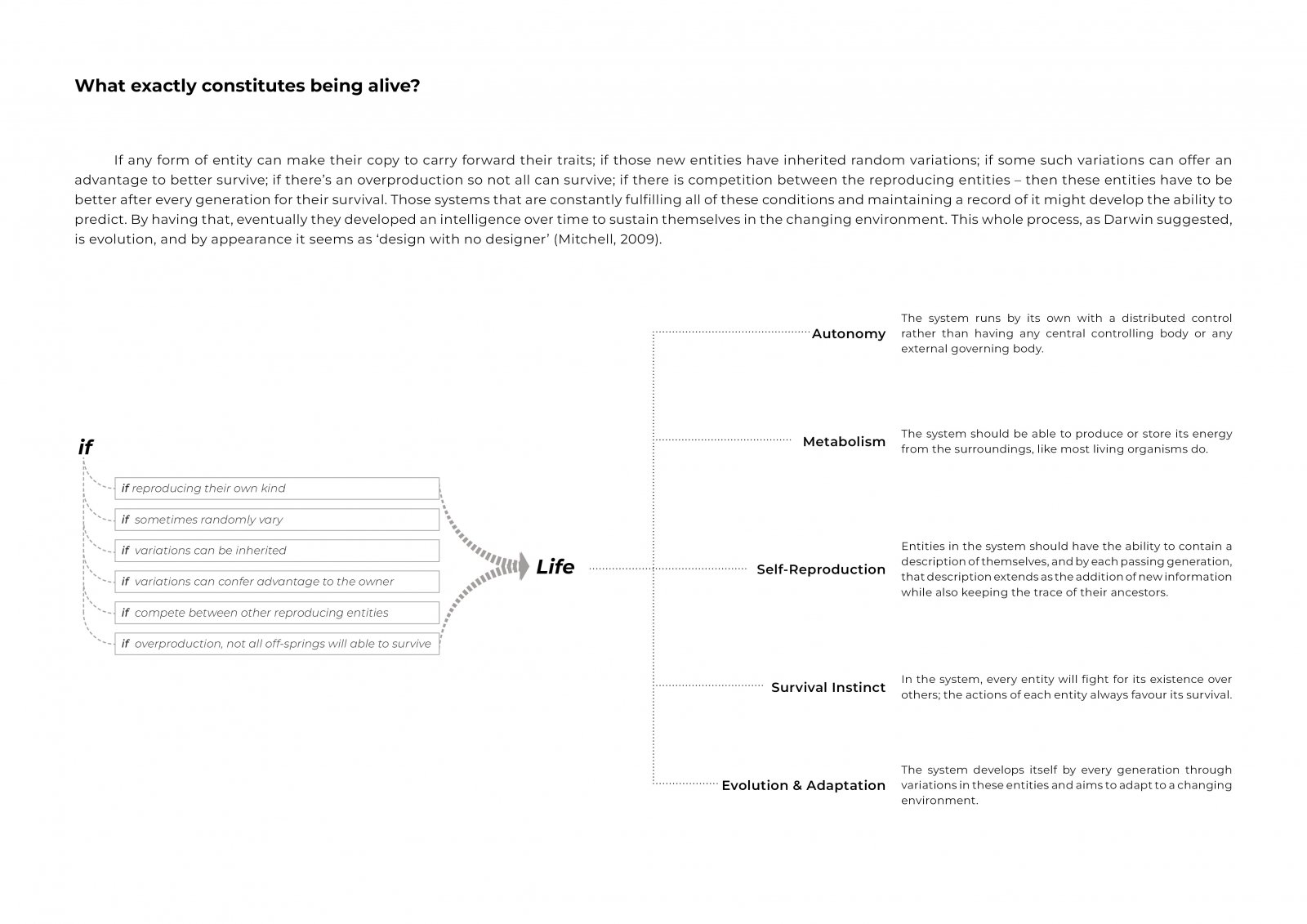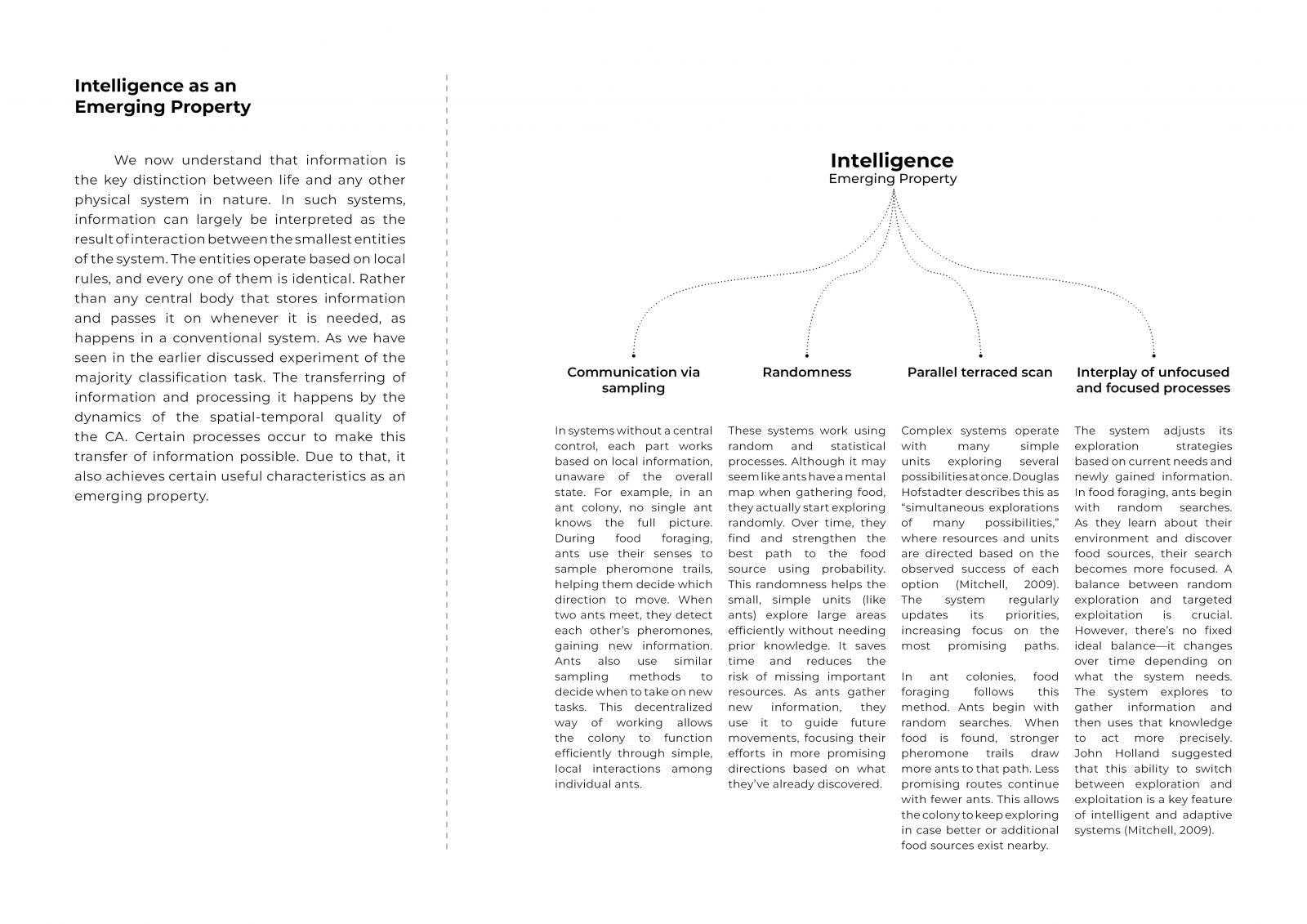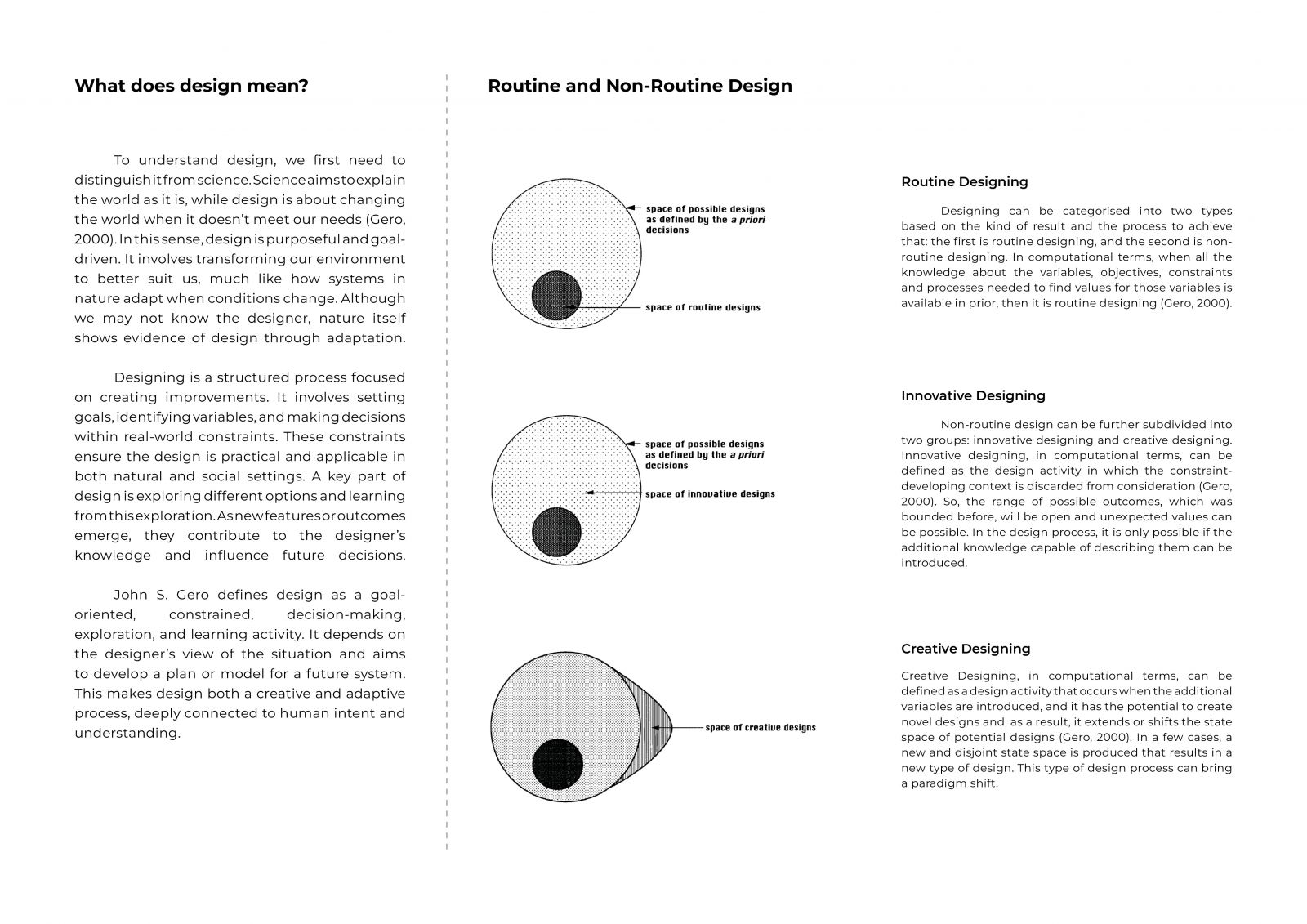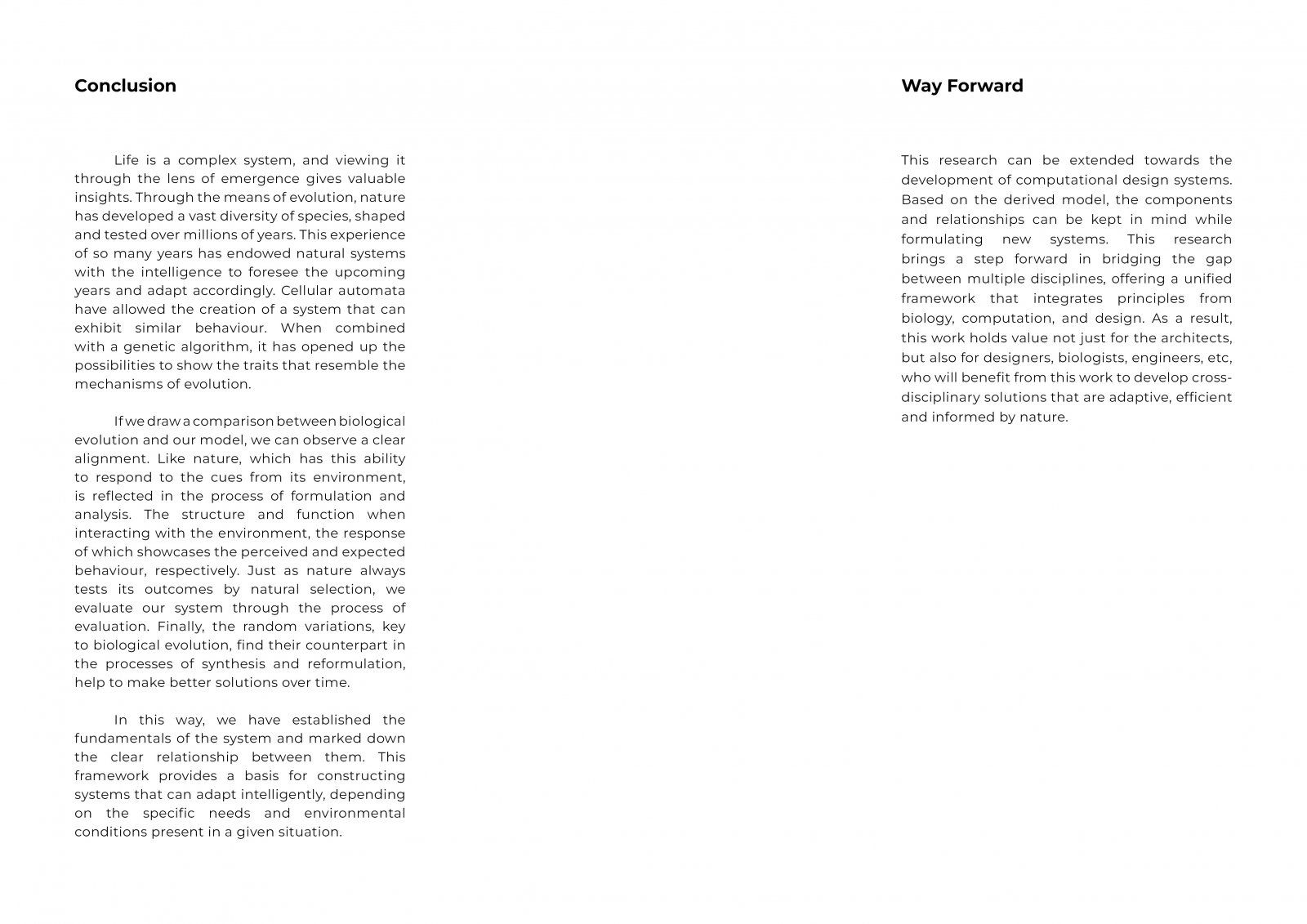Your browser is out-of-date!
For a richer surfing experience on our website, please update your browser. Update my browser now!
For a richer surfing experience on our website, please update your browser. Update my browser now!
Nature has a remarkable ability to solve complex problems independently, often inspiring us to mimic it. However, we usually replicate only surface-level features, missing the deeper, process-driven mechanisms behind nature’s success. These mechanisms often rely on emergent behaviors—results arising from simple entities interacting locally. Though engaging with such systems is challenging due to their non-linear and iterative nature, computational tools can help simulate, simplify, and guide these processes. This paper explores how emergence functions in nature and how its principles can be abstracted into a creative design framework. By merging biological insights with computational modeling, the research aims to redefine evolutionary systems design. It proposes a flexible methodology for formulating new systems with adaptive and emergent capabilities. The work bridges biology, computation, and design, providing a unified framework useful across disciplines. Designers, architects, biologists, and engineers can use this research to create intelligent, adaptive systems informed by nature’s efficient problem-solving strategies.

